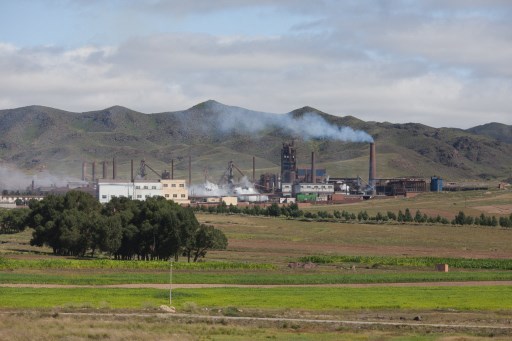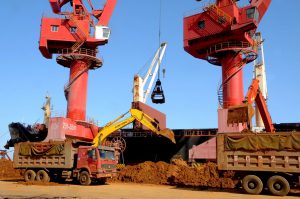Domestic and friendly-country investments are welcomed in vital minerals essential to electric vehicles, wind turbines and drones
(AF) The US administration and the European Union are negotiating plans to invest in the 17 minerals with unique properties known as rare earths that today are largely extracted and refined in China.
In 2019, the US imported 80% of its rare earth minerals from China, the US Geological Survey said, while the European Union obtained 98% of its supply from Chinese mines, the European Commission said.
“The expected exponential growth in demand for minerals that are linked to clean energy is putting more pressure on US and Europe to take a closer look at where the vulnerabilities are and the concrete steps these governments can take,” Jane Nakano, a senior fellow at the Washington-based Center for Strategic and International Studies, told Agence France-Presse.
Amid the transition to green energy in which rare earth minerals are sure to play a role, China’s market dominance is enough to sound an alarm in western capitals.
TRADE AS A WEAPON
“Given China’s history of using trade as a weapon, several countries are now seeking supply chain security in several critical and strategic minerals, including rare earths, for which China controls global trade,” Mark Gordon, rare earths analyst at Taylor Collison in Adelaide, told Asia Financial.
“This monopoly provides threats to both military and domestic supplies, exacerbated given current geopolitical tensions. The US has recently enacted bipartisan legislation looking to promote domestic upstream and downstream production of rare earths, with this including the provision of US$800 million for research and development,” he noted.
Rare earth minerals such as neodymium, praseodymium and dysprosium are crucial to the manufacture of magnets used in wind turbines and electric cars. They are already present in smartphones, computer screens and telescopic lenses.
Others have more traditional uses, like cerium for glass polishing and lanthanum for car catalysts or optical lenses.
BOOST PRODUCTION
Washington aims to boost production and processing of rare earths and lithium, another key mineral component, while “working with allies and partners to increase sustainable global supply and reduce reliance on geopolitical competitors,” Sameera Fazili , deputy director of the National Economic Council said last Tuesday.
US companies such as MP Materials and miners based in allied countries such as Australia hope to fill the gap.
MP Materials relaunched the Mountain Pass rare earth mine in 2017 and aims to make it a symbol of America’s industrial rebirth, saying the concentration of rare earths at its site is one of the world’s largest and highest-grade rare earth deposits.
The company’s aim is to separate rare earth minerals from each other through a chemical process, and then by 2025 manufacture the magnets that industry uses. The project was supported by the US government, although a Chinese company is a minority shareholder.
MILITARY REFINERY
Elsewhere, Australian company Lynas has won several US contracts, including an ore refinery in Texas for the military that was supported by the US Defense Department.
The Australian-owned American Rare Earths has also set up operations in the US, acquiring the La Paz, Arizona, and Laramie, Wyoming, mines as well as putting a third project in Nevada close to Mountain Pass under review.
In Europe, Bernd Schafer, managing director of rare earth mineral consortium Eit Raw Materials, said this month that an “action plan” will soon be presented to the European Commission on how to boost production.
China is expected to remain dominant for some time to come, but Schafer said that if recycling is scaled up, “20-30% of Europe’s rare earth magnet needs by 2030 could be sourced domestically in the EU from literally zero today”.
With reporting by Agence France-Presse























